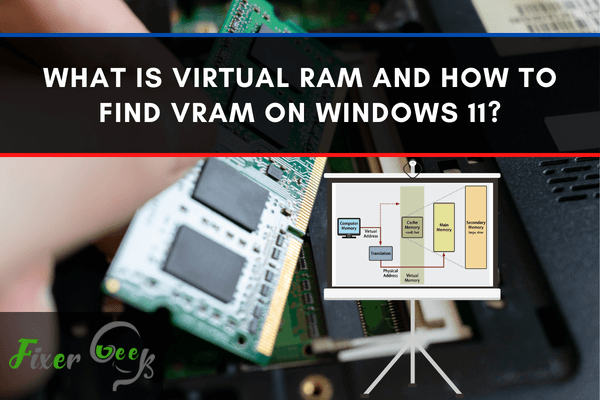- What Is Virtual Memory?
- How to check VRAM in Windows 11?
- Method 1. Check VRAM via Settings in Windows 11
- Method 2: Check VRAM via Task Manager in Windows 11
- Method 3: Check VRAM via Resource Monitor in Windows 11
- Method 4. Using DirectX Diagnostic Tool (DXDIAG)
- Method 5: Using GPU-Z
- Difference between VRAM vs. RAM
- How do I find my graphics card VRAM?
- Conclusion
Virtual RAM (VRAM) is computer memory used to store images, textures, and other data for processing by the GPU (graphics processing unit). VRAM is typically located on the graphics card but can also be found on the motherboard or in the CPU.

What Is Virtual Memory?
Virtual memory is computer memory used to store data for processing by the CPU (central processing unit). Virtual memory is typically located on the motherboard or in the CPU.
How to check VRAM in Windows 11?
There are a few ways to check your VRAM in Windows 11.
Method 1. Check VRAM via Settings in Windows 11
- Press the Windows logo key + I on your keyboard to open Settings.
- Click on System.
- In the left pane, select Display.
- Under "Advanced display settings," click on Display adapter properties for Display.
- In the Adapter tab, you will see a number next to "Dedicated Video Memory." This is your VRAM.
Method 2: Check VRAM via Task Manager in Windows 11
- Open Task Manager by pressing Ctrl+Shift+Esc or right-clicking on the taskbar and selecting "Task Manager."
- Go to the Performance tab and select GPU 0 under the "GPU" column.
- The number next to "Dedicated Video Memory" is your VRAM.
Method 3: Check VRAM via Resource Monitor in Windows 11
- Open the Start menu and type "Resource Monitor" into the search bar.
- In the Resource Monitor window, go to the Memory tab and look for the "VRAM Usage" section.
- Here, you will see a graph showing how much VRAM is being used and available.
Remember that your computer may use some of your system RAM for VRAM, so the amount of VRAM listed in the Task Manager may be less than the total amount in your computer.
Method 4. Using DirectX Diagnostic Tool (DXDIAG)
- Press the Windows key + R to open the Run dialog box.
- Type dxdiag and press Enter.
- In the DirectX Diagnostic Tool window, go to the Display tab.
- The number next to "Dedicated Video Memory" is your VRAM.
- Click the Save All Information button and save the file to your computer. This will create a text file you can view later if necessary.
Method 5: Using GPU-Z
- Download GPU-Z from here: https://www.techpowerup.com/gpuz/
- Run the program and go to the "Display" tab.
- The number next to "Dedicated Video Memory" is your VRAM.
- You can also click on the "Save" button to save a report of your GPU information. This will create a text file you can view later if necessary.
Difference between VRAM vs. RAM
VRAM and RAM are both types of memory used by your computer. VRAM is used specifically for graphics, while RAM is used for general purposes.
VRAM is faster than RAM, which means it can quickly process information. This is why VRAM is important for gaming and other graphics-intensive tasks.
VRAM is also more expensive than RAM, typically only in higher-end computers. If you want to upgrade your computer for gaming or other graphics-intensive tasks, then upgrading your VRAM should be one of your priorities.
How do I find my graphics card VRAM?
There are several ways to determine how much video RAM (VRAM) your graphics card has. The first way is to check the specifications of your graphics card. If you don't have the specs handy, you can check VRAM using Windows Settings, Task Manager, or a third-party program like GPU-Z or DirectX Diagnostic Tool.
Checking your VRAM is important if you want to upgrade your graphics card or troubleshoot performance issues. It will help you determine if you need to upgrade your VRAM and how much VRAM you need.
Conclusion
There are a few different ways to check your VRAM in Windows 11. The easiest way is to open the Settings app and go to the System section. You can also check your VRAM usage in the Task Manager. Finally, you can use a program like GPU-Z or DirectX Diagnostic Tool to check your VRAM. Both programs will give you a more detailed report of your graphics card's performance, including the amount of VRAM used. Even if you don't plan on doing anything particularly graphics-intensive, it's still a good idea to know how much VRAM your graphics card has. This way, you can troubleshoot any performance issues that you may be having. Additionally, knowing how much VRAM your graphics card has will help you determine whether you need to upgrade your VRAM.